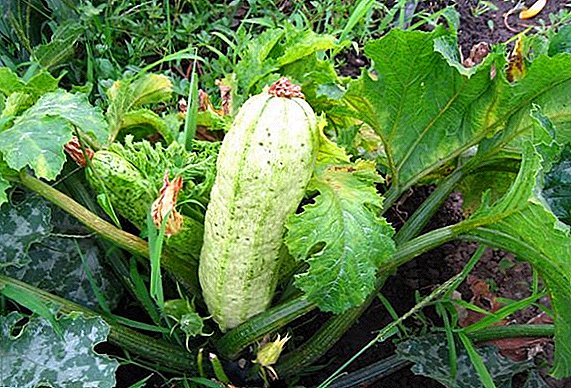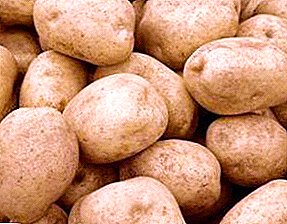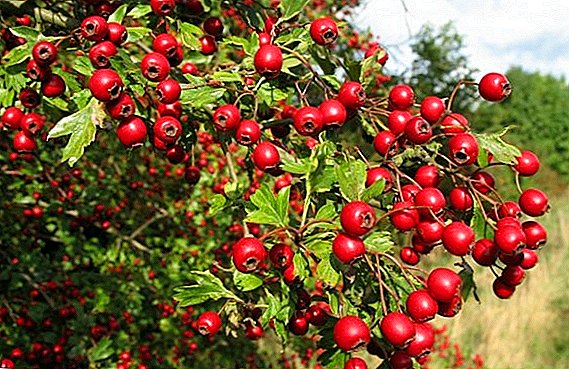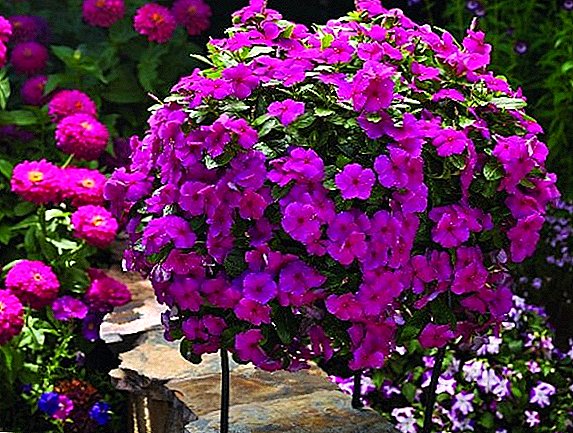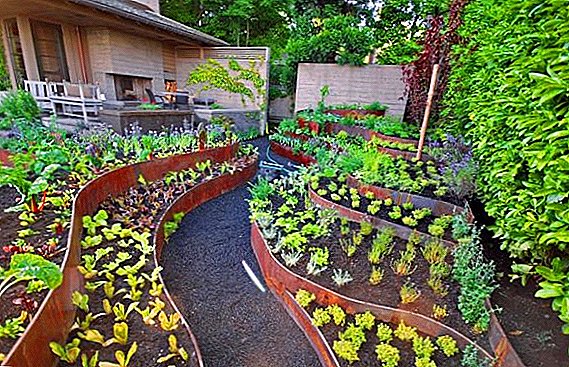 The suburban area, with all its advantages, has one drawback — it takes a lot of time to allocate to it.
The suburban area, with all its advantages, has one drawback — it takes a lot of time to allocate to it.
And if it is also located quite far from home, then the owner has something to think about.
And yet there is a solution: let's see how to equip a garden and a vegetable garden for lazy (due to circumstances) summer residents.
Garden for the lazy
The main task for such a land is to provide maximum yield with minimum labor costs. Of course, will have to workbut without much fanaticism. Yes, and knowledge of agricultural technology is useful.
Many experienced gardeners and gardeners have such plots, who know from their own experience that the “extra movements” in practice turn out to be just a waste of manpower and resources.
For the garden, which is visited once a week, this is especially true. After all, in addition to the beds, modern citizens want to also relax in the air.
Therefore, even before the start of the season, many think about planning.
Where to start: planning a lazy garden or vegetable garden
Before proceeding to work, let's see which styles are most popular today.
Important! It is worth undertaking such redevelopment if the dacha is somehow protected and there are no problems with water.The most appropriate would be the direction of "country" - everything is deliberately simple in it, improvised materials are used, and there is a place for rest. This is exactly what the "lazy ranch" seems to be.
Fans of beautiful views can dwell on the landscape style: decorative plants are used for decoration, adapted to local conditions and not requiring special care. Shrubs that need frequent shearing and lawns can be excluded.
Lush dachas in the Dutch style are pleasing to the eye, but are hardly appropriate here. The cost of such beauty is already more than, and the time saved on the beds, often goes on arrangement, and not on rest.
Recreation area - this is a matter of taste. Usually they try to place it in such a way that it is possible to put a brazier and leave some space for a playground for children. The main thing is that "relax" does not harm the plants. 
Did you know? Country estates appeared under Peter I and for a long time remained a kind of country salons in the open air. There in warm time all color of aristocracy gathered.Arbor or benches set, looking at the relief. The barbecue area (like flowerbeds) is often enclosed with large granite, covered with sand, gravel or pebbles. Vertical gardening will provide a pleasant shade, but at the same time the arch should not block the light of vegetables growing nearby.
What to grow: tips and tricks
Lazy gardener can tell a lot to beginners. Let us dwell on the most important points that need to be kept in mind.
Geographical features
To collect the maximum yield with minimal care, focus on local conditions.
It is better to stop the choice on plants and varieties, familiar to a particular region. They will take without much hassle. Seasonal digging, and even more so the construction of a greenhouse, does not fit into the concept of a "lazy plot", therefore too thermophilic species are deleted from the list. 
Important! In the northern regions, some "continental" varieties can yield only with the greenhouse cultivation method. That is, for the "lazy" farming will have to pick up other plants.Of course, exotics are pleasing to the eye, but are not suitable for areas with a harsh climate. Take a closer look at the neighboring sites - for sure there are spectacular and unpretentious plants that immediately "go to growth."
Disease and pest resistance
Choose the most resistant varieties. Gardeners know that they will not do without processing, but it is important for us to keep such manipulations to a minimum - once or twice a maximum per season.
In addition to the seedlings themselves, the state of the soil is also important. Salted areas and land that has not been fertilized for a long time increase the risk of disease. After a while, the leaves may take spots or turn yellow, the roots or stem dry out.
To avoid such symptoms, ask the "vitality" of different varieties. Yes, and such a factor, as the state of the neighbor "latki", also plays a role - if there is a disorder, pests can easily go to safe beds for the lazy. For the prevention of planted familiar to all calendula or nasturtium.
Preference for large perennial plants
Large plants with a perennial growth cycle do not deliver. This applies to:
- mountain ash;
- honeysuckle;
- lilacs;
- irgi;
- lemongrass;
- hops;
- long-growing flowers (echinacea, clematis, lavender);
- coniferous trees.
Did you know? The end of the 1960s in the USSR was marked by a growing interest in dacha plots. By that time, many restrictions had already been lifted, and with a certain amount of luck, the townspeople could become the owners of the desired six hundred square meters.
When selecting flowers, keep in mind that some of them may bloom in the second year. If this is not a fundamental point, you can safely take a place for them.
Dealted with decorative types, it's time to go to the vegetables.
Tips for the care of plants in the garden
Lazy garden and smart garden can be combined. But beds with vegetables at the same time should not be in the shade of fruit trees. Relief is also taken into account when landing in open ground.
Thermophilic cucumbers, peppers and tomatoes are usually given a place on the hill. Radish, cabbage and beetroot grow well in the valley.
Such beds are often bordered with a curb, giving them an arbitrary shape (most often it is squares, but there are also circles).
Care of seedlings is reduced to the usual procedures for watering, weeding and dressings. But there are tricks that save time and effort.
Mulching
Rows and holes are mulched so as not to do extra weeding. Empty seats are evenly covered with sawdust or straw. At an early stage of growth, you can also use a film, which also protects young shoots from temperature extremes.
Important! Any natural product is suitable for mulching. - from grass to shredded bark. In addition, different films are used, blown fabric coverings and even cardboard, which, after watering, are covered with a new layer of mulch.
Ground grass (or better mowed) will also fit - it is laid out, and new weeds simply do not grow up. Such a mulch eventually dries and decomposes, thereby fertilizing the soil. True, this method is suitable for well-kept gardens - the risk of a new weed is always there.
Watering organization
Hoses and watering cans with a fence from the barrel leave in the past. The drainage option is much better suited, but then you have to make high beds. Far more economical is drip irrigation.
A plastic trunk pipe of the required diameter is installed with a coupling at one end (to connect to a tap) and a plug at the other. Wiring to the side is done by installing tees. At the row level, holes are made where the nipple is connected to the tape, which is bent on the other edge.
Screw the clutch on the faucet, slowly turn on the water, adjusting the pressure. Drops will evenly moisten the soil, and you do not have to run around with a hose and overpay for water.
Did you know? The 1980s were marked by a real dacha boom. Garden enterprises were created at various enterprises, and the harvest was slightly balanced by the shortage of products, which became chronic.
For winter, the tape is simply rolled up until the next season.
Use of garden tools
It's all on the "classics" - rake, shovel, bucket, watering can, secateurs for trimming bushes. The quantity of the remanent is better thought out in advance so that the extra copies do not interfere with the summer and do not take up space during transportation.  Buying the cheapest is not worth it, as well as taking a device generously flavored with plastic. Before buying, try how comfortable the same shovel is at work, whether the holder is suitable for the length (so that the rest at the cottage does not turn into pain and stretching).
Buying the cheapest is not worth it, as well as taking a device generously flavored with plastic. Before buying, try how comfortable the same shovel is at work, whether the holder is suitable for the length (so that the rest at the cottage does not turn into pain and stretching).
Another point: it is better to choose a tool of bright color, which will be noticeable immediately. It happens that you do not immediately remember where you just left the right thing, but it is not visible in the thick greenery.
Agree that it is not at all convenient to step over a rake every time. All is better keep in the country in a designated corner and protected from thieves place.
Lazy garden and garden: tips and tricks
To save time and effort, it is better to think over all the nuances associated with the development of a lazy area. Here are some tips to help with this:
- Before laying out seedlings, calculate how many vegetables you will be enough. If, out of habit, every free centimeter is planted, then the harvest will be more than enough, but part of it will lie for years. It turns out unreasonable labor costs.
Important! Pots or boxes will be inappropriate: the plants in them regularly have to feed, water and transplant. At the dacha we take already prepared seedlings.
- To dig up the whole area with this approach is not necessary, only a place under the beds. Experience shows that there is nothing terrible for the earth in this, while the dug-up blocks everywhere dry up and you have to break them, even to level them, which is very laborious.
- Box-beds of 3 × 1 m are best suited. They are dug up to the depth of the bayonet, on poor soils they take a little deeper.
- High beds can be made, having dug up the cut off sections of old barrels.
- For climbing plants, a large-mesh mesh is prepared, which is attached to the spacers.
- Bottom circles of trees and shrubs can be thrashed with a black “non-wrap” 60 microns thick. Put a cardboard on top and pour it in, then fall asleep wood chips or other mulch.
- The film or the same "non-cloth" can be laid in 2 layers so that the weeds probably do not break through.


